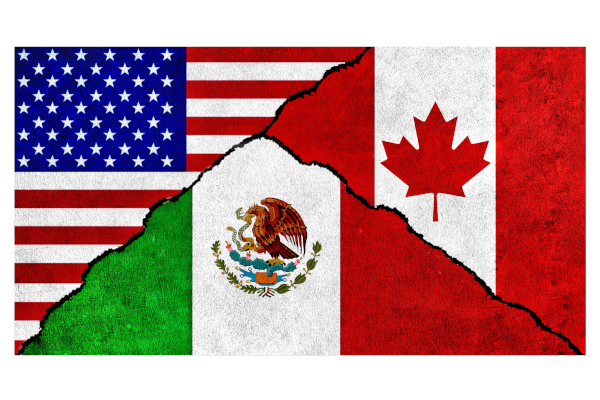The appetite for continued exposure to China continues to change among North American companies, with nearly three-quarters of companies in a recent AlixPartners’ survey already starting to reduce their exposure, and more than half planning to reduce exposure next year by more than 10%.
The results of part of a global survey conducted by AlixPartners with supply chain professionals. The firm broke down results by region. The North American results included responses from 100 executives in five industries, with 60% working for companies that have reported at least $5 billion sales.
The results found that companies are generally targeting a 40% reduction in their share of sourcing from China to reduce exposure, with the U.S. (plus 30%) and Mexico (plus 10%) expected to see the biggest gains. While the effort remains in the early stages, AlixPartners found that companies are making decisions on make vs. buy strategies and investing in supplier development, logistics and distribution footprint changes, and global procurement cost modeling.
The survey results dovetail with other recent reports. In August, an AlixPartners report noted nearshoring was being helped by the passage of new regulations and legislation in the U.S., including the CHIPS Act, Infrastructure Investment and Jobs Act, Inflation Reduction Act, and the Build America, Buy America Act as well as the introduction of tariffs in the 2018 to 2020 timeframe on imported goods from China to the U.S.
Accenture surveyed 1,230 senior executives in 14 countries (350 from the U.S.) and 11 industries in the first quarter of 2023, and found that 85% of companies plan to manufacture and sell most of their products in the same region in 2026. Today, that number is 43%. In the U.S., 91% of companies intend to accomplish this, up from 52% today.
In addition, sourcing regionally will almost double to 65% by 2026, up from 38% today. That number, at 50% currently in the U.S., is expected to grow to 82% by 2026. U.S. companies are investing an average of $65 million in reshoring and production facility relocation this year, and expect that to accelerate to $188 million by 2026.
The latest AlixPartners’ survey found that total costs are driving part of this trend, as China is no longer the total landed cost leader, especially when adjusted for risk.
“Nearshoring comes with its own unique list of challenges, with labor availability, CapEx, and location selection topping the list. The past few years, however, have taught us that the priority list can change due to unforeseen events that sometimes crop up seemingly overnight,” the report said. “Special attention needs to be paid to developing a better understanding of U.S. incentives. While there is familiarity with federal and local incentives (including the Inflation Reduction Act (IRA) or the CHIPS and Science Act (CHIPS) programs) and planning to utilize them, this is still where companies feel the least ready.”
However, the survey found that while most companies are aware of possible U.S. federal incentives, only 42% plan to make use of these.
SC
MR


More Global Trade
- Retail sales see gains in October, reports Commerce and NRF
- Geopolitical readiness in supply chains: Strategic challenges for leaders
- Tariffs, taxes and trade: The impact of Trump’s reelection on the supply chain
- Aggregators sitting on the throne of Africa’s e-commerce supply chains: What lessons can we learn?
- Cross-border transport 2024: Navigating the surge
- Looking back at NextGen 2024
- More Global Trade
Latest Podcast

 Explore
Explore
Topics
Procurement & Sourcing News
- Retail sales see gains in October, reports Commerce and NRF
- Geopolitical readiness in supply chains: Strategic challenges for leaders
- With capacity to spare, logistics real estate demand remains subdued
- Tariffs, taxes and trade: The impact of Trump’s reelection on the supply chain
- How to improve demand forecasts for new product families
- Aggregators sitting on the throne of Africa’s e-commerce supply chains: What lessons can we learn?
- More Procurement & Sourcing
Latest Procurement & Sourcing Resources

Subscribe

Supply Chain Management Review delivers the best industry content.

Editors’ Picks




